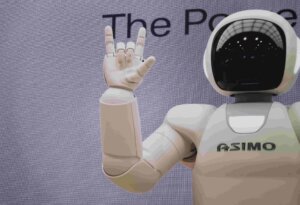What Is Machine Learning?
Machine learning (ML) is often a component of artificial intelligence (AI). Enabling software programs to become even more reliable at making predictions without precisely programming them to do so. ML techniques estimate new target values by using historical information as input.
It focuses on learning machines to understand from information to improve with all of the experience rather than precisely programming them. Networks are designed in machine learning to discover patterns or even comparisons in huge datasets. And also to make good judgments and statistical inferences on such analysis.
Machine learning techniques enhance with its using becoming more exact as they gain access to sensitive information. ML implementations can be found in our homes, purchasing carts, modern media, and medical care.
What Is The Significance Of Machine Learning?
Machine learning is essential. Because it offers industries insights into market trends in buyer behavior and organizational business patterns and assists in launching innovative products.
Most of today’s modern top companies, including Facebook, Google, or rather Uber, have made machine learning a key element of their operational activities. For several businesses, machine learning has now become a meaningful game changer.
How Does It Operate?
UC Berkeley (external to IBM) divides a machine learning computation learning system into three major components.
A Decision-Making Procedure: Machine learning techniques are usually used to make an estimation or categorization. Your methodology will generate an approximation about a template in the statistics based on certain input information categorized or unclassified.
A Operate for Errors: An error function uses to analyze the model’s estimation. Whether there are known illustrations, an error function could perhaps compare them to determine the model’s reliability.
The Model Optimization Method: If the model fits the sets of data inside the training examples better, the weight values utilize to match the difference between the known instance and the model approximate. The methodology will restate this analysis and optimize the process, upgrading weights independently till a reliability threshold reach
What Are The Most The Various Forms Of ML?
Classical machine learning is frequently classified by how a methodology teaches to improve its estimation accuracy. There have been four fundamental learning methods: reinforcement learning, unsupervised learning, semi-supervised learning, and supervised learning. The methodology that computer scientists use has determined by the category of information they need to estimate.
Learning That Supervises: Throughout this sort of machine learning, computer scientists provide training computation to methodologies and specify which factors they need to get the method to look for correlations between. The method’s input or even output both clarify.
Learning That Is Unsupervised: Methods that educate on raw data use in such a category of machine learning. The method scans large datasets for every valuable connection. The data used to train methodologies and also the assumptions or guidelines they predestined.
Learning That Is Semi-Supervised: This method of machine learning merges two previous categories. Although computer scientists will provide mostly labeled data sets to a process, the framework is ready to explore perhaps the information by itself and establish the own awareness of the information collection.
Learning That Is Reinforcement: Reinforcement learning generally uses by computer scientists to educate and equipment to accomplish a multi-step procedure with strict guidelines. Computer scientists program a method to achieve a project and provide it with positive or negative indicators as it determines how and when to accomplish the task. However, for even the most portion, the methodology decides what measures to take through the path.
Who Utilizes (MI), Perhaps What It Used For?
Machine learning has practiced in a category of purposes. Only the proposed framework that controls Facebook’s social media feeds has been among of the best-known illustrations of machine learning even in operation.
Facebook uses machine learning to personalize how every person’s content present. If an individual regularly decides to stop looking at a specific group’s comments, either the predictive algorithm will begin to show much more of the community’s movement earlier throughout the feed.
The engine is working beside the action sequences to bolster known trends in the participant’s online behavior. If the participant’s reading habits modify until they fail to view posts from a certain group throughout the next week, the Facebook feed will now update automatically.
What Are The Interests And Drawbacks Of (ML)?
ML has used in various applications, from estimating consumer behavior to developing the processor for self-driving automobiles.
In terms of benefits, it will assist businesses in better understanding their clients. it models can understand affiliations and help managers customize product making and promotional proposals to customer requirements by gathering and analyzing data and comparing it with behaviors over time.
Machine learning used as a primary factor in some businesses’ marketing strategies. Uber, for example, matches drivers mostly with riders using techniques. The Search engine uses ML to reveal ride advertising campaigns on results pages.
However, ML has drawbacks. For starters, it can be costly. Computer scientists, who mostly demand massive pay, are usually in charge of machine learning project activities. Such project teams also necessitate the purchase of software facilities which can be costly.
Then there is the issue of prejudice in ML. Methods educated on data sources that exclude specific communities or encompass mistakes can include imprecise world models that struggle hardest and discriminate at worst. Whenever a company’s key business procedures are based on skewed designs, it risks legislative and reputational consequences.












